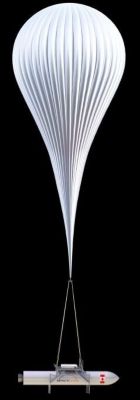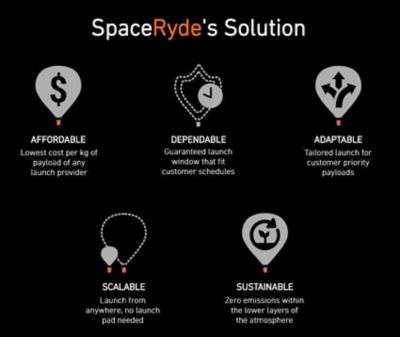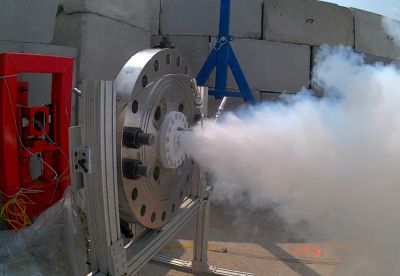-
-
Accédez au logiciel étudiant gratuit
Ansys donne les moyens à la prochaine génération d'ingénieurs
Les étudiants ont accès gratuitement à un logiciel de simulation de classe mondiale.
-
Connectez-vous avec Ansys maintenant !
Concevez votre avenir
Connectez-vous à Ansys pour découvrir comment la simulation peut alimenter votre prochaine percée.
Pays et régions
Espace client
Support
Communautés partenaires
Contacter le service commercial
Pour les États-Unis et le Canada
S'inscrire
Essais gratuits
Produits & Services
Apprendre
À propos d'Ansys
Back
Produits & Services
Back
Apprendre
Ansys donne les moyens à la prochaine génération d'ingénieurs
Les étudiants ont accès gratuitement à un logiciel de simulation de classe mondiale.
Back
À propos d'Ansys
Concevez votre avenir
Connectez-vous à Ansys pour découvrir comment la simulation peut alimenter votre prochaine percée.
Espace client
Support
Communautés partenaires
Contacter le service commercial
Pour les États-Unis et le Canada
S'inscrire
Essais gratuits
ANSYS BLOG
December 14, 2021
Hitching a Balloon Ride to Space
When Austrian skydiver Felix Baumgartner parachuted from a pressurized capsule attached to a helium balloon from about 24 miles in the stratosphere above New Mexico on October 14, 2012, most people just saw an incredibly dangerous stunt resulting in a big success for Baumgartner and his corporate partners. But the husband-and-wife team of Sohrab Haghighat and Saharnaz Safari saw an opportunity to start a business using balloons to lift small rockets into the atmosphere; where the rockets would be launched above the atmosphere and carry their cargo to a predetermined destination in space.
Haghighat, who has a doctorate in aerospace engineering, and Safari, a chemist with an MBA, launched SpaceRyde in 2018. “The First On-demand taxi to space” was chosen as the company tagline.

Haghighat had used Ansys software to solve many engineering challenges in the past, so knew he could rely on it again for this new venture. He contacted Ansys and learned about the Ansys Startup Program, which offers simulation software to startups at reduced prices. Soon, SpaceRyde was a member of the program, which has proven to be invaluable to the company.
“Launching rockets from balloons is not a proven technology right now for launching satellites, so we are playing a little bit of a catch-up to get to market,” Safari says, noting that they are in competition with more established commercial space companies. “So, we have to be fast in our development and using the right software — such as Ansys — is helping us make our development faster or in some cases more accurate, precise, and correct.”
On-demand and Affordable Access to Space

SpaceRyde’s goal is to offer on-demand access to space. Payloads will consist of large batches of small satellites, each weighing less than 150 kilograms, for communications, Earth observation, and remote sensing. The first step is using a balloon to lift a rocket resting horizontally on a carrier beneath the balloon to a height of 30 kilometers. Once the rocket carrier has stabilized and pointed the rocket in the desired direction, the rocket is dropped from the carrier and ignited to launch the payload farther into space.

Launching payloads from stationary launch pads on Earth is expensive due to the amount of fuel burned to escape the force of gravity and the effects of the atmosphere. Rockets use less fuel when launched in vacuum conditions above 99% of the atmosphere. SpaceRyde’s $1 million rocket is cheaper than any other rocket available today, according to Safari.
Stationary launch pads also have costly maintenance and refurbishments between launches, and place severe restrictions on where launches can originate. A launch may have to be delayed if a major storm converges on a launch pad in Florida. With a balloon-based system, there is no permanent hardware to maintain, and the launch site can be moved outside of a storm’s range to avoid any delays.
“If you have different places that you can launch from, then you can make rocket launches as frequent as airplanes fly these days,” Safari says. Cheap rockets and flexibility of launching from anywhere is how SpaceRyde makes on-demand access to space possible.
Managing Costs and Safety Using Structural Simulation
To keep costs down, SpaceRyde resorts to simulation tools, and performs lots of virtual tests. Among their tools, Ansys Mechanical stands out.
To virtually test structural components, SpaceRyde engineers used Mechanical to ensure the strength of different pieces of the launch vehicle as well as the ground equipment, including the critical load-bearing parts in the rocket engine test stand.
The intuitive contact tools in Mechanical enabled for high-fidelity modeling of pin joints, bearings, and large jointed assemblies under static and transient loads without having to manually input every contact region. Shared topology support enabled them to mix shell and solid elements in their models to obtain efficient analyses of complex weldments that combine thin and thick structural members.
Ansys Mechanical was also used to analyze the stress on actuators mounted to the rocket's body. These actuators push on the bell section of the rocket nozzle to control the orientation of the rocket, which can induce considerable amounts of stress in the nozzle walls. The results of these analyses reveal how the design can be modified to improve numerous characteristics such as weight, manufacturability and cost without compromising structural integrity.
“Through modeling of complete assemblies, Ansys software gives us high confidence in the design of safety critical projects,” says William Harradence, who is part of the propulsion engineering team at SpaceRyde.
Rockets from Balloons Requires Precision
The most innovative component of SpaceRyde’s system is the least obvious one at first glance — the rocket carrier that the balloon lifts into space. Surprisingly, the carrier includes an array of sensors controlled by proprietary software to aid in the precise positioning of the rocket prior to launch.
“The first year was devoted to work on the rocket carrier,” Safari says. “I call it the heart of our operation.”
When launching from a stationary launchpad, you know the rocket’s exact starting coordinates and its destination, so you can calculate all flight parameters beforehand using powerful supercomputers. But variables are introduced when launching from a balloon. The balloon can drift from its predicted launch point. The rocket trajectory and the direction in which the rocket has to be pointed needs to be updated because of this drift. So, GPS and other sensors on the rocket carrier determine its exact location. Calculations must be done on the fly to determine the optimal flight path that will get the rocket to its desired spot using the limited amount of fuel stored on the small rocket. Turning the rocket carrier so the rocket is pointing in the right direction at launch also requires proprietary technology.
The reusable rocket carrier becomes extremely important if the launch has to be aborted. For a ground-based launch, you simply stop the countdown and interrupt the ignition process and the rocket is still standing safely on the ground in its launch tower. If a space-based launch is aborted, the launch team must be able to direct the rocket carrier back to a designated spot on Earth safely — with a fully fueled rocket aboard — without causing it to explode on landing. SpaceRyde proved they could do this during a test.
On June 9, 2019, in North Bay, Ontario they launched their first test flight. Using a smaller test version of the system, they safely landed the rocket on its carrier in the woods with no damage to the equipment. It was ready for reuse as planned.
Fluid and Thermal Simulations for Balloon-Based Rocket Launches
SpaceRyde’s engineers have put the Ansys fluid and thermal solvers they received through the Ansys Startup Program to good use solving other challenges they faced designing the balloon, rocket, and carrier system.
Simulating Flow
SpaceRyde engineers used Ansys Fluent to predict the shape and quality of the wake below the balloon during ascent. This provides important information regarding the air flow around the rocket carrier during ascent and helps estimate the impact of flow on thermal loads, rocket carrier’s control capabilities, and more.
Flow simulation helped SpaceRyde design their rocket engine injector. The engineers used Fluent to estimate the pressure drop across the injector, which enabled them to target a precise design to ensure safe engine operation before manufacturing the injector. Subsequent physical experiments with the machined injector showed nearly identical behavior to that predicted by Fluent.

Thermal Analysis
Using Ansys Icepak, SpaceRyde engineers modeled the thermal environment of the rocket carrier on its journey from the ground to the upper atmosphere. This enabled them to analyze the thermal environment while incorporating complex factors such as the changing solar environment and changing air pressure at elevation. Icepak enabled them to evaluate various mission profiles and to accommodate the changing thermal environments.
Future Plans for Balloon-Launched Satellites
SpaceRyde has grown from a two-person, husband-and-wife operation to a company of over 20 people, majority of whom are engineers. They have received grants from the Canadian Space Agency (CSA) and from the National Research Council of Canada to fund their R&D. They plan to start full commercial operations in 2023. That means they have a lot of work to do before then.
“Next year is going to be a big year for us,” Safari says. “In 2022, we're going to launch into space with our full-scale rocket and rocket carrier, joining the big leagues of the handful of other rocket companies that have been able to do that.”
The Ansys Startup Program team will be cheering them on.
For more information, visit the Ansys Startup Program.